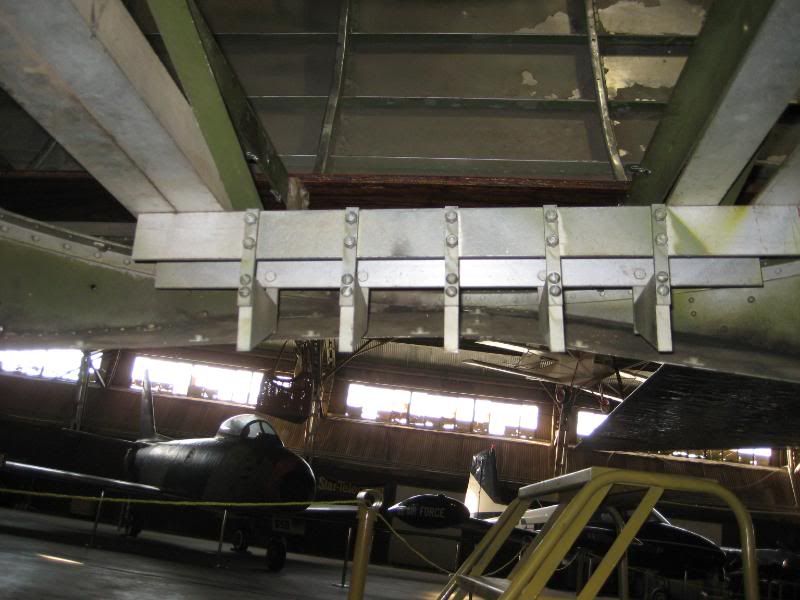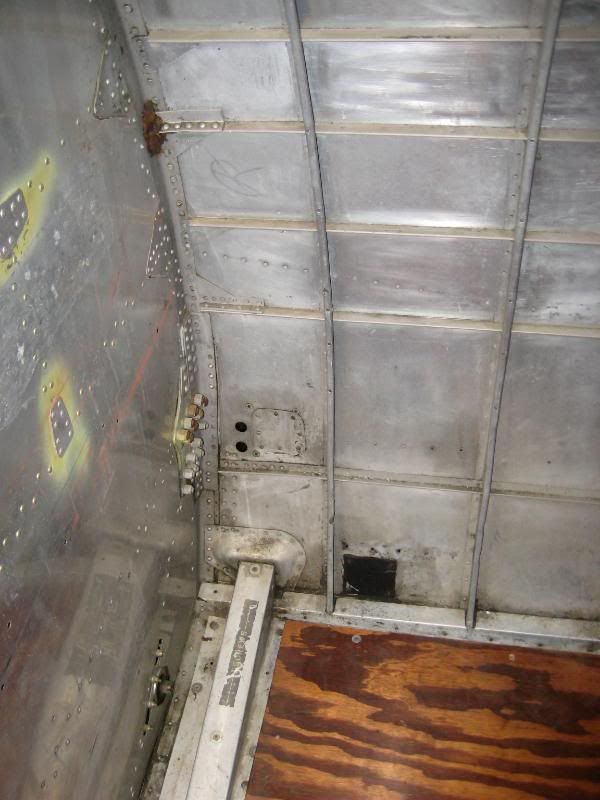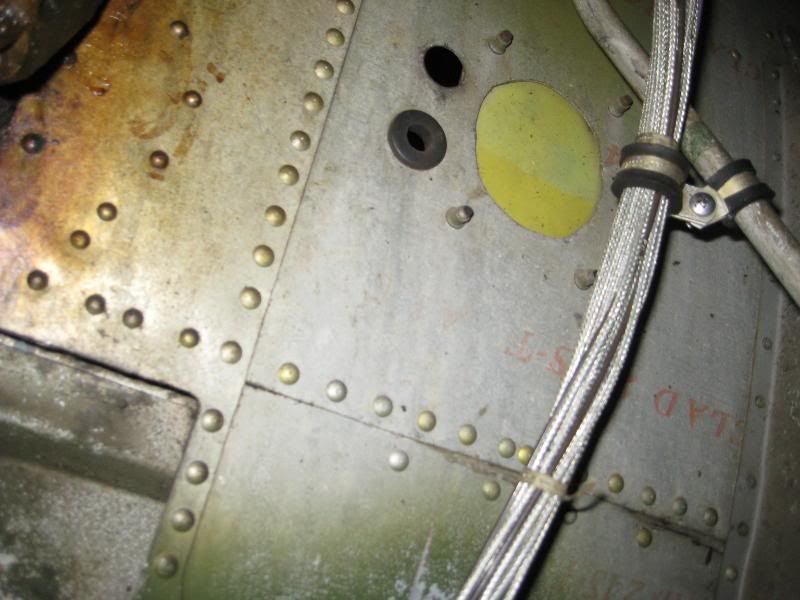seabee1526 wrote:
Beautiful! See you at Thunder Over Michigan 2010! (i hope)
If all the stars align......we are in the planning stage now.
Here is a radar installation-heavy update. Greg, one of our newest maintenance volunteers, removed the temporarily installed wing-to-body fairings so we can do some work in the wing root area. I removed a battery shelf and will do a little in-progress report on that project as I go.
This morning we removed the radome cover fairing to snoop around and do some dimensional checks for the radome and radome stanchion I'm going to start. The first photo is of the ball turret mounting intercostal in the ceiling of the forward waist.

This is the piece that always got pushed through the top of the fuselage in belly landings with the ball still attached. The aft fuselage was nearly always scrapped during the war if this was torn out. Notice that ours has some interesting holes drilled in it. I am thinking these are modifications that were done when the Mod Center installed the radome set-up.
The next photos are of the radome "hole" in the fuselage. This first one is looking directly down from the ceiling mount at the bottom of the airplane. The funky trusswork of aluminum was added after the H2X was removed from the airplane. It also makes for a nice floorboard mounting structure, so I won't be removing it until we have the parts fabricated for the radome. Notice, too, that there are two diameters of sheetmetal in the photo. The larger hole is the original mounting surface for the ball turret, and the smaller diameter area is the ring that fills the gap left by the smaller diameter radome.

Here is another view of the framework. Perhaps some form of sensor or air sampling equipment was hung from this deal. I'd like to find out for posterity, but I do know that it will be coming out as the H2X progresses.

This shot shows the business end of the truss with the interesting attaching points, five on each side:

This picture is of various holes that were drilled in the right side of the radio room where the H2X black boxes and operator were situated. The dark rectangle at floor level is apparently where the power was fed to the installation from the aircraft power bus.

Here is the outside-the-fuselage view of that hole and the plug that was later installed:

And this is another plugged access port in the same general area of the left fuselage:

Finally, here is a nice placard that is still in pretty good shape for being applied in 1944. Also, for those of us who were contributing to the B-17 interior discussion in the main hangar, note that the skin in this area was NMF and there is still some green primer hanging on to the stringers:

We'll update more when we get back to work on her,
Scott





